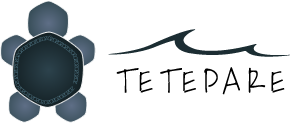Welcome to Tetepare
Tetepare Island, in the Western Province of the Solomon Islands, is one of the conservation jewels of the South Pacific. This long, rugged island, cloaked in rainforest and fringed with biodiverse reefs, is the largest uninhabited tropical island in the Southern Hemisphere. Home to the one of the Solomon Islands' leading conservation projects and a unique, locally-owned and managed ecolodge, Tetepare's natural abundance attracts visitors from around the world.
Uninhabited for 150 years, Tetepare is an island forgotten by time and swathed in mystery. There are many stories that explain why the island was abandoned – fear of head-hunting, ill health attributed to curses, even men being turned against one another by dangerous gossiping in the villages. But what makes this island truly extraordinary is that, in a country which has lost almost all of its forests to commercial logging, Tetepare remains untouched.
At the beginning of this century, when the threat of logging loomed over Tetepare, the island's traditional landowners rejected logging offers and came together to together to save this pristine wilderness for themselves and for future generations. An organisation made up entirely of local community members called the Tetepare Descendants' Association (the TDA) was created, to manage and protect the resources of the island as a conservation area.
Tetepare has received international recognition for its conservation and archaeological significance.Experts from around the world, including renowned ornithologist and author Jarrod Diamond, have commended the work on the island. A dazzling variety of plants and animals make their home in the island's 120 square kilometres of primary lowland rainforest – some of the last remaining in Melanesia.
The island's beaches support nesting populations of three species of turtle including the endangered leatherback turtle. Other species inhabiting the island and surrounding waters include the dugong (Dugon dugon), the world's largest skink (Corucia zebrata), the endemic Tetepare White-eye (Zosterops tetepari), hornbills, tiny pygmy parrots, the endangered coconut crab, huge bump-headed parrot fish, schools of barracuda and pods of bottlenose and spinner dolphins. more
HELP CONSERVE TETEPARE
The Tetepare Descendants' Association needs your help to conserve Tetepare. We are keen to offer ways for our guests and supporters to contribute to our work in whatever way they see fit.
Money raised will be used for conservation and community work, including turtle monitoring, patrolling the Marine Protected Area and supporting the local communities through sustainable livelihood or education scholarship programmes. To support one of our conservation or community programmes, please click here
